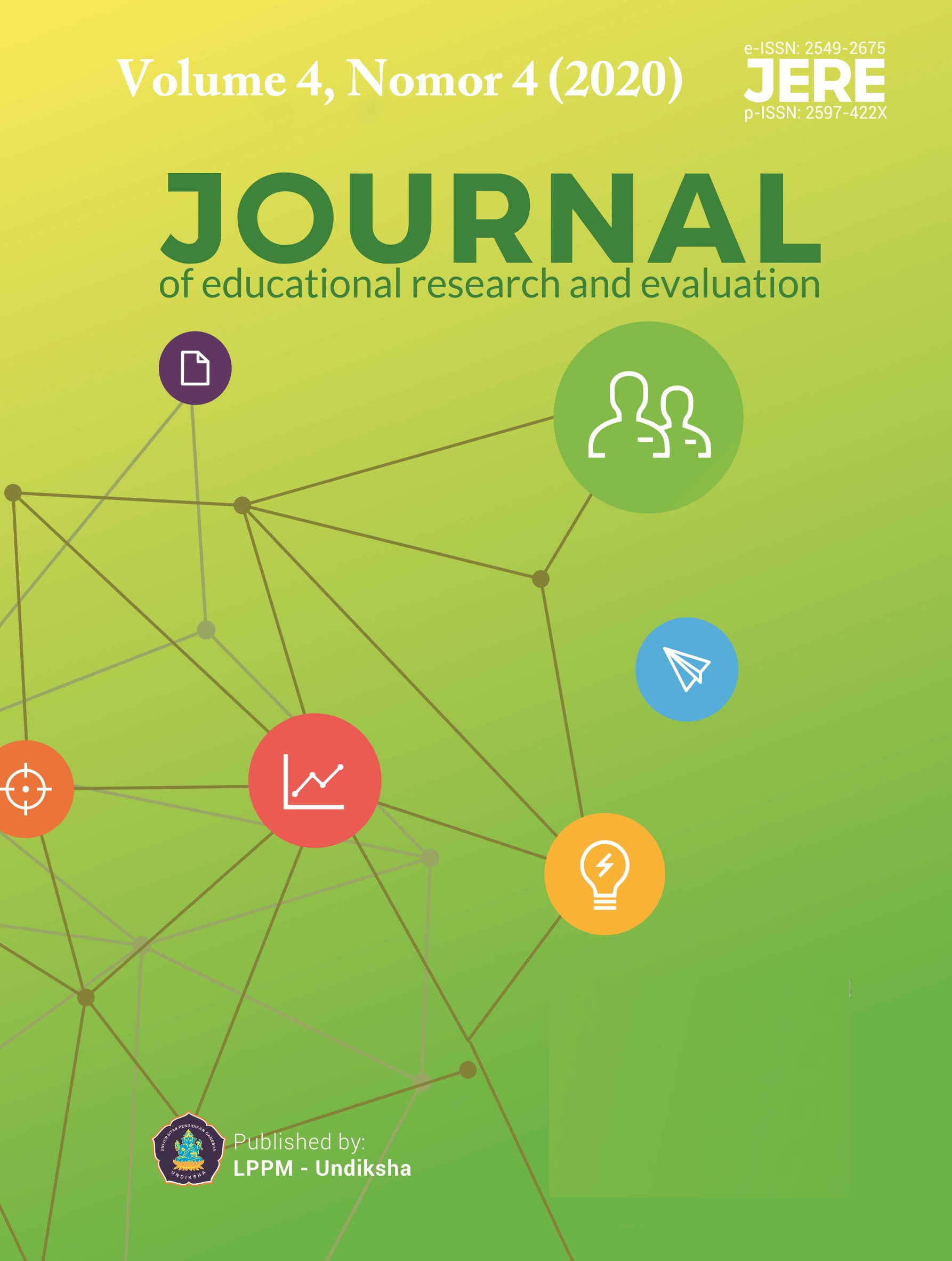Needs Analysis of Blended Learning Development on Instructor Training at Basarnas
DOI:
https://doi.org/10.23887/jere.v4i4.29352Keywords:
Needs Analysis, Blended Learning, BasarnasAbstract
Blended learning facilitates learning by providing various learning resources and considering the characteristics of learners. This study aims to conduct a needs analysis for the development of blended learning in instructor training at Basarnas. Needs analysis is carried out to explore information about gaps and needs as well as student profiles that can be used as a basis or reference in developing blended learning at the next stage. This research is a descriptive study with quantitative approach. Data collection was carried out by means of observation, interviews, and distributing questionnaires. Interviews were conducted with the Head of the Sub-Directorate for Planning and Standardization of Basarnas Personnel, while the filling of the questionnaire was carried out by the Basarnas Rescuer who will attend instructor training as many as 50 respondents. The results show that instructor training at Basarnas can be designed in the form of blended learning by using a project-based learning approach to overcome existing limitations or gaps so that the implementation of blended learning that combines the delivery of face-to-face learning and online learning can be an intervention that is suitable to be applied and appropriate. with the needs at Basarnas.
References
Balasubramaniam, S. M., Bhargava, S., Agrawal, N., Asif, R., Chawngthu, L., Sinha, P., … Sood, B. (2018). Blending virtual with conventional learning to improve student midwifery skills in India. Nurse Education in Practice, 28(October 2017), 163–167. https://doi.org/10.1016/j.nepr.2017.10.028
Bazelais, P., & Doleck, T. (2017). Experimentally Determined Deformations and Stresses in. (May 2018). https://doi.org/10.1007/s10639-018-9748-9
Brannan, T. (2018). Academy’s performance using the following measures of student growth and achievement. Michigan Merit Curriculum High School Graduation Requirements (18 credits) ENGLISH LANGUAGE ARTS (ELA)-4 Credits Proficiency in State Content Standards for ELA (4 credit. 08, 22275–22278.
Dabbagh, N., & Bannan-Ritland, B. (2005). Online Learning: Concepts, Strategies and Application. New Jersey, USA: Merril Prentice Hall, Pearson Education Inc.
Dwiyogo, W. D. (2018). Pembelajaran Berbasis Blended Learning. Jakarta: PT Rajagrafindo Persada.
Lee, L. T., & Hung, J. C. (2015). Effects of blended e-Learning: a case study in higher education tax learning setting. Human-Centric Computing and Information Sciences, 5(1). https://doi.org/10.1186/s13673-015-0024-3
Lim, C. P., Wang, T., Gu, X., & Oakley, G. (2016). Blended Learning for Q uality Higher Education : Selected Case Studies on. Paris: United Nations Educational, Scientific and Cultural Organization.
María, E., Maza, T., Teresa, M., Lozano, G., Camilo, A., Alarcón, C., … Fadul, M. G. (2016). Blended learning supported by digital technology and competency-based medical education : a case study of the social medicine course at the Universidad de los Andes , Colombia. International Journal of Educational Technology in Higher Education. https://doi.org/10.1186/s41239-016-0027-9
Prawiradilaga, D. S. (2012). Prinsip Disain Pembelajaran. Jakarta: Kencana.
Pribadi, B. A. (2018). 21 Konsep Esensial dalam Teknologi Pendidikan. Jakarta: Dian Rakyat.
Downloads
Published
How to Cite
Issue
Section
License
Authors who publish with the Journal of Evaluation and Research in Education (JERE) agree to the following terms:
- Authors retain copyright and grant the journal the right of first publication with the work simultaneously licensed under a Creative Commons Attribution License (CC BY-SA 4.0) that allows others to share the work with an acknowledgment of the work's authorship and initial publication in this journal.
- Authors are able to enter into separate, additional contractual arrangements for the non-exclusive distribution of the journal's published version of the work (e.g., post it to an institutional repository or publish it in a book), with an acknowledgment of its initial publication in this journal.
- Authors are permitted and encouraged to post their work online (e.g., in institutional repositories or on their website) prior to and during the submission process, as it can lead to productive exchanges, as well as earlier and greater citation of published work. (See The Effect of Open Access)











